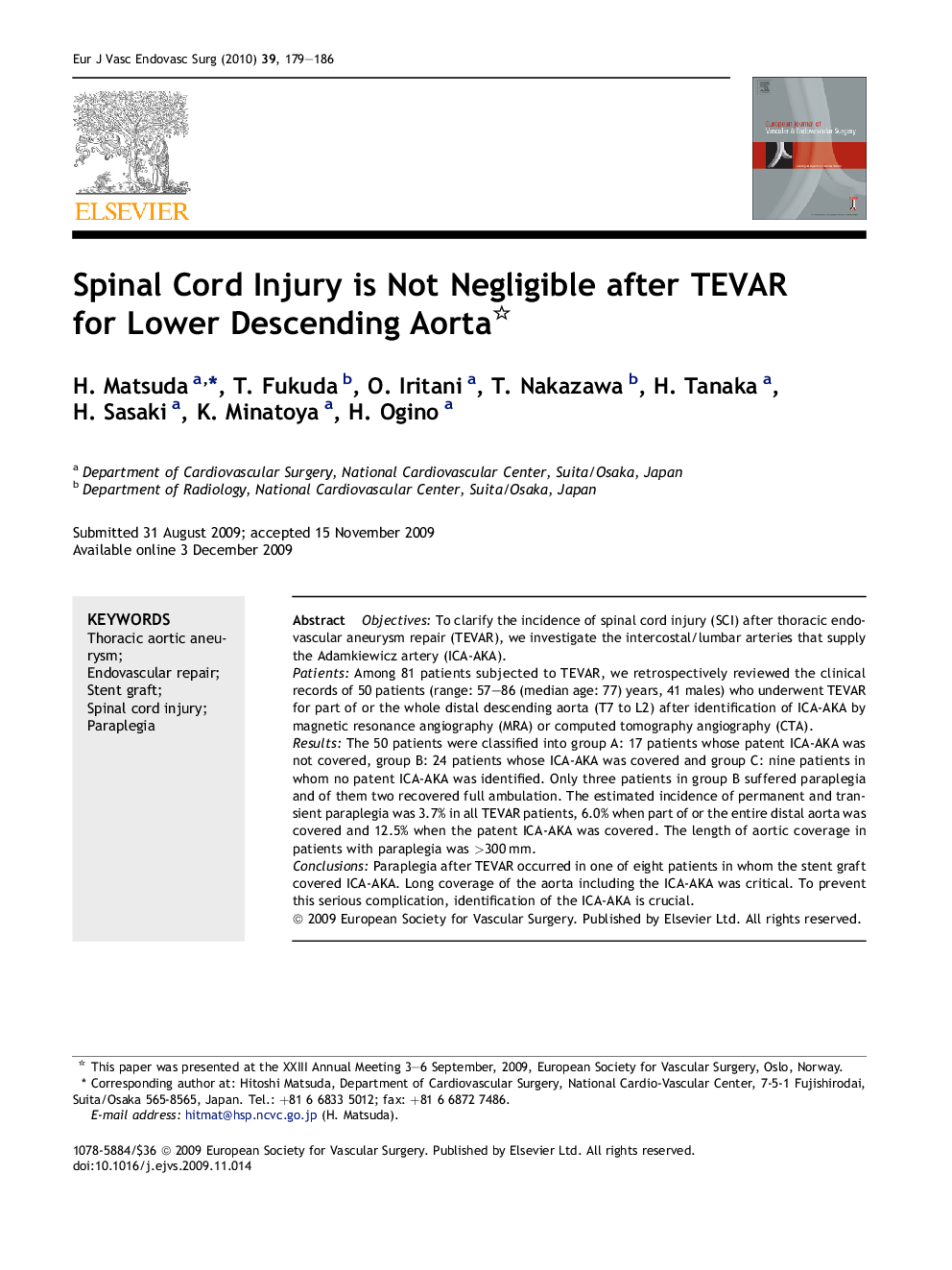| کد مقاله | کد نشریه | سال انتشار | مقاله انگلیسی | نسخه تمام متن |
|---|---|---|---|---|
| 2912897 | 1575508 | 2010 | 8 صفحه PDF | دانلود رایگان |

ObjectivesTo clarify the incidence of spinal cord injury (SCI) after thoracic endovascular aneurysm repair (TEVAR), we investigate the intercostal/lumbar arteries that supply the Adamkiewicz artery (ICA-AKA).PatientsAmong 81 patients subjected to TEVAR, we retrospectively reviewed the clinical records of 50 patients (range: 57–86 (median age: 77) years, 41 males) who underwent TEVAR for part of or the whole distal descending aorta (T7 to L2) after identification of ICA-AKA by magnetic resonance angiography (MRA) or computed tomography angiography (CTA).ResultsThe 50 patients were classified into group A: 17 patients whose patent ICA-AKA was not covered, group B: 24 patients whose ICA-AKA was covered and group C: nine patients in whom no patent ICA-AKA was identified. Only three patients in group B suffered paraplegia and of them two recovered full ambulation. The estimated incidence of permanent and transient paraplegia was 3.7% in all TEVAR patients, 6.0% when part of or the entire distal aorta was covered and 12.5% when the patent ICA-AKA was covered. The length of aortic coverage in patients with paraplegia was >300 mm.ConclusionsParaplegia after TEVAR occurred in one of eight patients in whom the stent graft covered ICA-AKA. Long coverage of the aorta including the ICA-AKA was critical. To prevent this serious complication, identification of the ICA-AKA is crucial.
Journal: European Journal of Vascular and Endovascular Surgery - Volume 39, Issue 2, February 2010, Pages 179–186